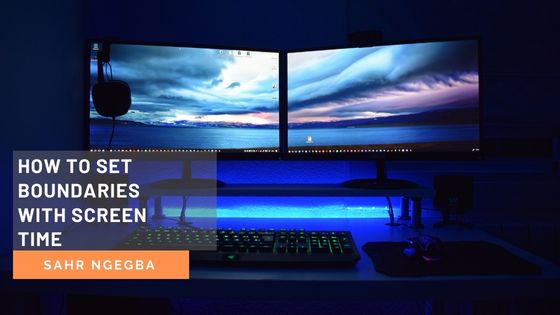Managing screen time is an important part of maintaining a healthy lifestyle. Excessive screen use can lead to various issues, including eye strain and disrupted sleep patterns. Striking a balance involves intentional choices and establishing healthy limits. Begin by reflecting on your current screen time habits. Utilize device tools or apps to track your usage patterns. This awareness is the first step in making informed decisions about setting boundaries.
Clearly define your priorities and identify activities that matter most to you. Whether it’s going out with friends, spending time in nature, or focusing on work, establishing priorities helps you allocate time intentionally. Identifying these meaningful activities can help you create a weekly schedule allocating time for work, leisure, and relaxation. Be specific about when you’ll engage in screen-related activities and when you’ll disconnect.
Establish specific limits for daily or weekly screen time. Use device settings or apps to set alarms or notifications when you reach your predetermined limits.
Identify areas in your home or specific times during the day where screens are off-limits. Create screen-free zones to foster a healthier environment for rest and interpersonal interactions.
Actively prioritize real-world connections over virtual ones. Set aside time for face-to-face interactions with friends and family to encourage a break from the digital realm.
Incorporate tech-free rituals into your daily routine. This could include device-free meals, tech-free hours before bedtime, or dedicated time for meditation and outdoor activities.
Involve family members in the process of setting and respecting screen time boundaries. Educate children and teenagers about the importance of balance and encourage open discussions about limits.
Be intentional about your screen use. Instead of mindlessly scrolling, set specific goals for your screen time. Approach screen use with mindfulness to enhance productivity and reduce unnecessary consumption.
Channel your screen time towards productive activities. Use digital tools for learning, skill development, or pursuing hobbies to make technology a positive force in your life.
Incorporate regular breaks into your screen time routine. Follow the 20-20-20 rule – every 20 minutes, you’ll need to look at something 20 feet away for at least 20 seconds. This practice helps reduce eye strain and ensures that screen time is interspersed with moments of rest for your eyes.
Recognize that setting boundaries with screen time is an ongoing process that may need adjustments. Be flexible and responsive to changes in your lifestyle, priorities, or technology use patterns.
By taking these new habits to heart and implementing them into your daily life, you can strike a balance that promotes a healthier relationship with technology and enhances your overall well-being.

